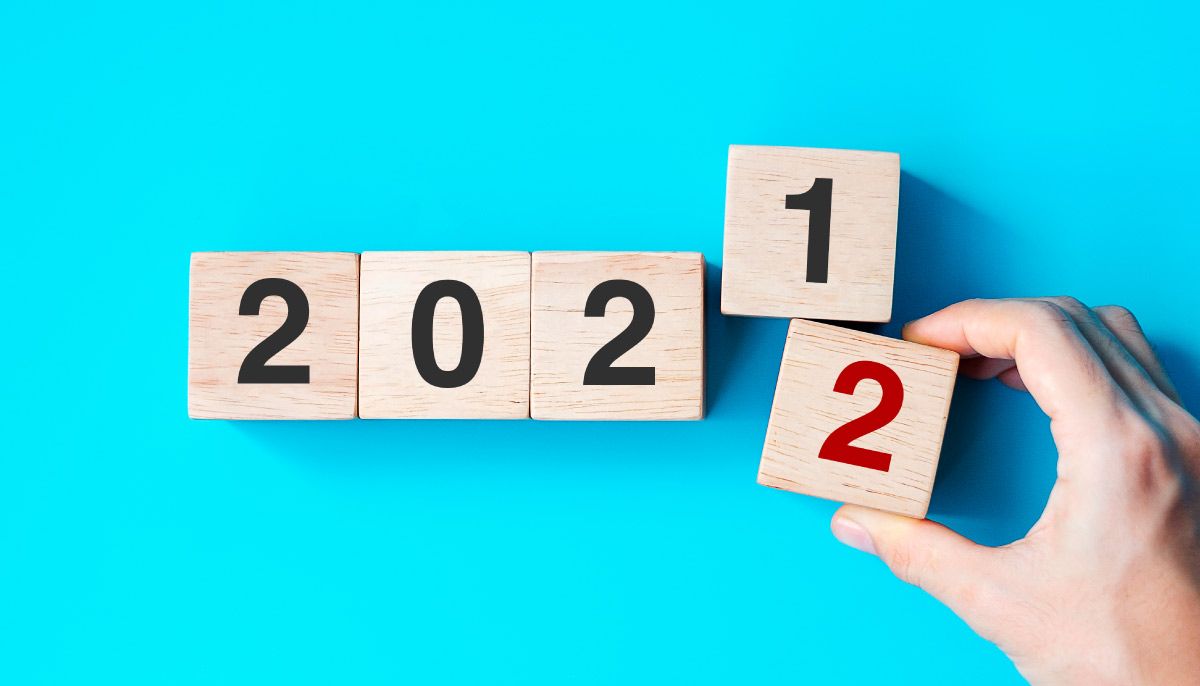
eCommerce Lessons – Was 2021 the Year the Tide Firmly Turned?
2021 was the year that the “perfect storm” hit retail – with fuel crises in the autumn, the effects of Brexit continuing to cause cross-border difficulties, and labor, warehouse and delivery partner shortages rife as the pandemic’s impact remained strong. However, despite it being a challenging 12 months, it’s not all been doom and gloom.
For many, COVID-19 accelerated fulfillment innovation and the ushering in of the ‘digital-first’ era, with retailers and brands prioritizing projects that could be easily digitized through eCommerce to keep up with customer expectations. Many also were able to capture the opportunities to drive eCommerce sales by anticipating future customer needs, not just meeting current expectations – and were already optimistically planning for post-pandemic retail months, and even years ahead.
So, what actually happened in 2021? And what are retailers’ key takeaways from this past year to ensure a prosperous, customer-centric 2022?
Making the most of omnichannel for “frictionless commerce”
From March 2020, the meaning of omnichannel shifted from merely having a passive on and offline channel stance to putting customer convenience at the forefront of the eCommerce agenda. 2021 has essentially been the dawn of the new age of a true ‘digital-first’ approach to retail – it served as the full year pilot, the make-or-break determiner for retailer and brand preparedness. If retailers or brands did not make the necessary investments in both money and time to futureproof their omnichannel approach, and grab customer attention and convert to loyalty from the outset, there will be 100 others waiting in the wings to swoop down and take your place.
Investments for the next year will be key given that nearly half of retailers (48%) surveyed about the 2020 season post-peak had not felt fully prepared for the demand. In addition:
- 53% of respondents agreed that they had had difficulty in locating available inventory which limited their organization’s success during peak, and would be making adjustments to their investments accordingly
- 49% agreed they needed to invest in appointing a BPO/3PL to assist with peak season
- 33% had invested in extra online customer service to assist with operations
- 36% anticipated investing in even more fulfillment capacity, such as omnichannel considerations
However, having a defined “omnichannel strategy” still means many different things to retailers and brands.
For many, being omnichannel-ready suggests the implementation of a Distributed Order Management (DOM) system, to route orders across multiple geographies between diverse fulfillment points. Assisting with delivery preferences (including sustainable options and delivery partner networks), labor availability and being in touch with real-time inventory management, a DOM can support multi-node fulfillment operations including curbside pick-up, buy online, pick up in-store (BOPIS), ship-from-store to micro-fulfillment centers or temporary, low-cost investment pop-up distribution centers (DCs) – all of which reported increased sales as a direct result of such investments in 2021.
Regional omnichannel options will continue to evolve in 2022 as smaller pockets of product prove competitive with continued changing pandemic guidelines, and new retailers spring up as social commerce booms. Having a finger on the pulse by being both preventative to potential issues, and reactive to immediate trends, will be the clincher.
Don’t be afraid of cross-border eCommerce
In July, goods that moved across EU borders and to the UK became subject to new rules known collectively as the “one-stop-shop” (OSS); all geared at simplifying a seller’s VAT responsibilities. All EU-based businesses are now subject to a threshold of €10,000 and when crossed within a year, VAT will be charged at the destination country where customers are located, rather than the location of the goods at the point of purchase. Determining where customers are from the point of sale and what rate of VAT will be applicable is essential to succeed in this new era of retail; and asking for help from those in the know can be one of the smartest strategies to employ.
Change can bring about considerable opportunity, as well as considerable uneasiness and lack of confidence. Being aware of the upcoming rules and changes in areas that are not within your expertise can be the difference between a successful operation, or customers abandoning their carts and your brand altogether. Whilst “buy local” trends and sustainability concerns continue to grow amongst customers, a net total of 57% of consumers still purchase products based on cost – prompting many to search further afield for the best deals.
Having a partner on-hand to provide payment and fraud information, tax advice (including Merchant of Record services) and multi-node options, means you can navigate the increased complexities of Brexit and cross-border retail seamlessly, with the intention of maintaining the supply chain and customer loyalty year-round; the difference between being a scalable retailer, or not.
Being a partner, not just a vendor
With 2022 just around the corner, there really is no better time to evaluate what you want your retail operation and overall brand identity to look like in the new year. If you want your products to be instantaneously recognizable throughout the entire supply chain, it may be wise to partner with a BPO that puts your brand first than a larger fulfillment network that depersonalizes the supply chain.
Similarly, ensuring your branded operations remain human is key in 2022. Acting like a partner rather than a vendor is so important for customer retention as ‘digital-first’ becomes the norm. As uncertainties continue across the globe with one thing or another, being able to have tough but transparent conversations if you encounter shortages, delays or unprecedented situations will decrease the change of customers being surprised and disappointed.
Being the retailer or brand that can offer a variety of channels where customers can reach out (live chat, email, phone, chatbots, social listening and social media monitoring) means there is always someone on hand, as brand guardian and representative, to assist quickly; preventing issues taking hold and escalating so customers take to forums, to the detriment of your reputation.
Whilst forecasting may continue to be a challenge in 2022, preparing your omnichannel offering, ensuring your cross-border operations are ready for the demand and treating customers as you would expect to be considered when purchasing, will go a long way whilst the global uncertainties continue for eCommerce. Getting closer to your customers should be the driving force and the cord tying together each and every stage of post-click activity together.
It’s not too late to consider new strategies – and improve the old. If you need a guiding hand, enlisting the services of a qualified BPO may just be the answer in the ‘digital-first’ 2022.
Further reading for the new year:
- In-Store Uncertainty Leads to Innovative eCommerce Solutions
- The rise of the “micro-influencer”
- Past the parcel – Amazon vs. Independent BPO
- Capacity crunch: fighting eCommerce growth with alternative fulfillment solutions
- The eCommerce VAT shift: 1 July 2021
- Smart Brand Strategies for Supply Chain Crises
- Worth the Wait: Speed vs. Sustainability in Last-Mile Delivery


